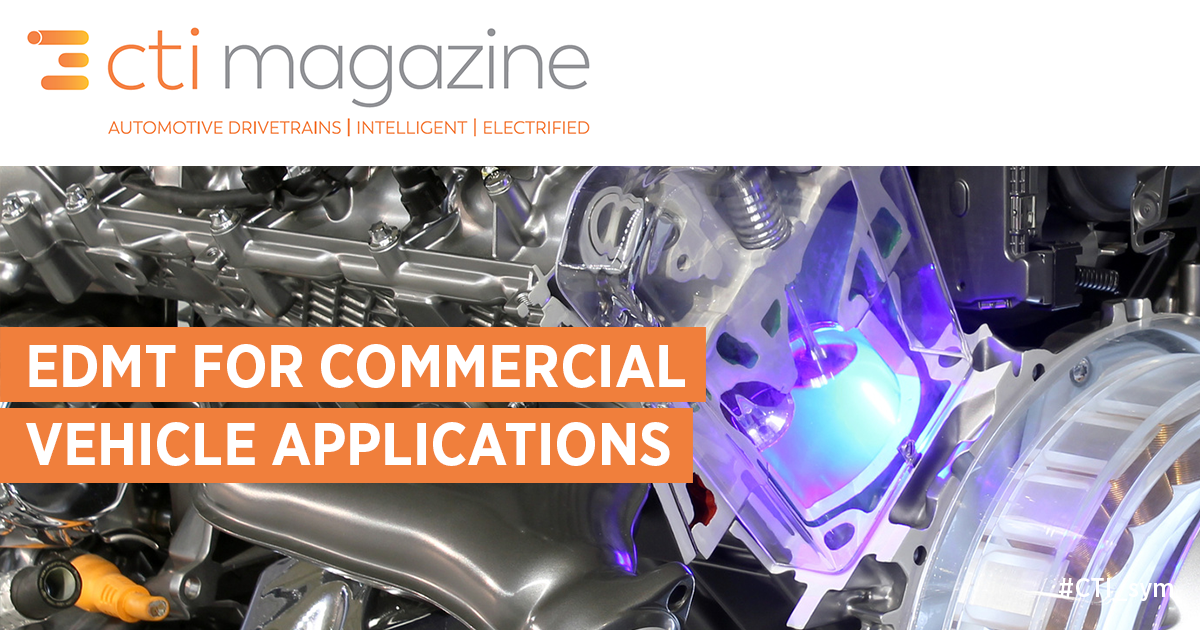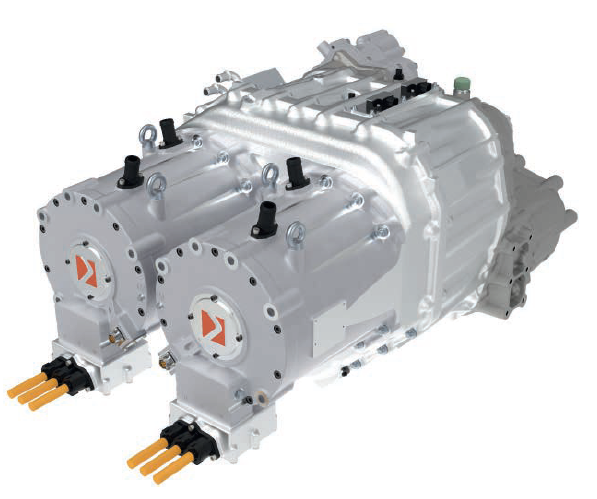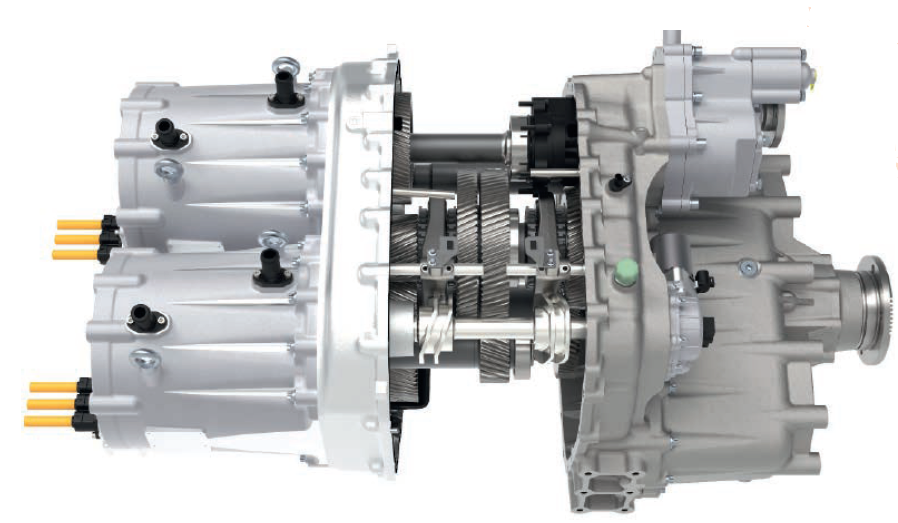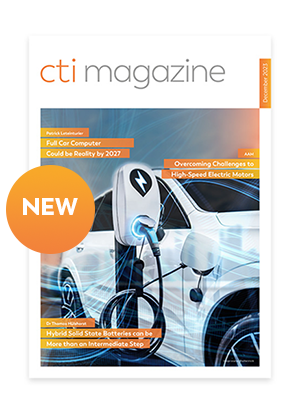
eDMT – electric Dual Motor Transmission
Electrification is a growing trend in all vehicle industries worldwide. This trend is especially prominent in the commercial vehicle industry with the rate of electric city buses having reached up to 80% in China. Compared to city buses, the electrification of larger vehicles such as commercial trucks has been significantly lower. This is due to in part being faced with higher power and torque requirements and more complex operating conditions, yet there is great future potential in this industry and new technological advancements provide solutions. In large electric vehicles, very powerful electric motors with corresponding power electronics and multi-speed transmissions are required, and it is essential for the electric commercial vehicle industry to increase the efficiency of the powertrain whilst also considering comfort. Customer surveys have shown that powershift transmissions are preferred, as these have the advantage of providing continuous vehicle propulsion as opposed to automated manual transmissions, where a power interruption occurs during shifting.
eKontrol Drive Co., Ltd., an established manufacturer of electric and hybrid powertrains from Suzhou, China, has developed the eDMT (electric Dual Motor Transmission) to be used in vehicles with a total weight of 31 to 90 tons. The eDMT is a 4-speed electric drive unit for longitudinal installation. It consists of two high-speed electric motors, which are performance-enhanced versions of existing tried and tested units from eKontrol’s product portfolio. The system’s maximum power from the electric motors is 400 kW and it has a maximum combined input torque of 800 Nm.

Figure 1 shows the exterior view of the “eDMT800” electric drive unit. Both electric machines are flange-mounted to the transmission and guarantee powershift capability. The 4 speed transmission, also known as Module 1, feeds the power to a power-split reduction gearbox, Module 2. Module 1 also has an output for an auxiliary drive (PTO – Power Take Off). Module 2 is used exclusively for very heavy vehicle applications, e.g. at ports or at mines.
Figure 2 shows the interior of the 4-speed transmission. The transmission is based on a layshaft design and has two selector forks with a common shift drum, which is electro-mechanically actuated. Shifting energy will be efficiently consumed only when needed (“power-on-demand actuation”). The shifting elements are designed as dog clutches. During shifting, the synchronisation of the input side gearset inertias is actively carried out via one of the two electric machines respectively. In contrast to an AMT (Automated Manual Transmission), this transmission offers the powershift capability because during the gear change the torque of one electric machine will always continue to be available at the output and therefore, it is possible to sequentially shift through all four speeds with no interruption in torque.

Author:
Cao Zheng, Managing Director, eKontrol Drive Technology
